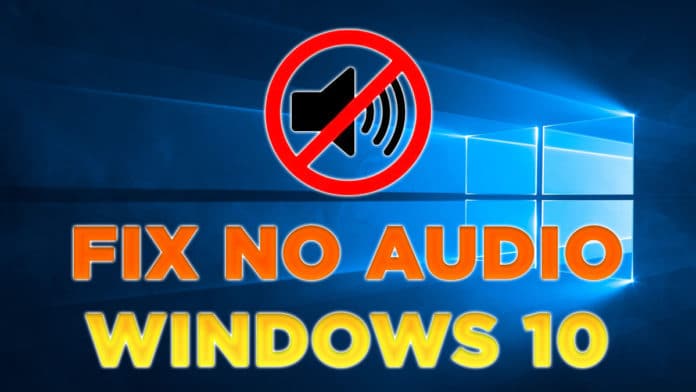If you’re facing problems like Missing Audio, No Audio, or Broken Audio On Windows 10 then you’re not alone as the latest Windows update namely KB5015878, KB5016616, or later updates caused audio problems.
The problem is affecting different users in different ways.
For instance, certain users are experiencing a complete audio blackout.
While some users are facing audio problems with specific ports, devices, or programs.
Microsoft has officially acknowledged the problems on the official Windows Health Dashboard website.
To resolve the issue Microsoft has shared workarounds and even applied the Known Issue Rollback System (KIR) to prevent the bug from spreading.
Here we have shared all the ways to fix audio problem after Windows update kb5015878 below.
RELATED: No Audio Output Device Is Installed In Windows 10 [FIXED]
Table Of Contents
Fix Audio Problem After Windows Update kb5015878
As mentioned earlier, Microsoft has already applied the Known Issue Rollback System (KIR) to prevent the bug from spreading.
This means the known issue will be automatically resolved and the end user doesn’t need to do anything.
But if you’re still facing problems then use any one of these three workarounds,
1. If You Haven’t Yet Installed The Update
As the heading says, if you haven’t yet installed the update on your PC then follow these simple steps to completely avoid the audio problems.
- Updating your audio device driver (also called “sound drivers” or “sound card drivers”) might prevent this issue. If there are updated drivers available on Windows Update or from your Windows device manufacturer’s (OEM) webpage, installing them might prevent this issue.
- If you are using any advanced audio applications such as Open Broadcaster Software (OBS), it is recommended that you backup all your settings before installing the update.
2. If Only Certain Apps Are Impacted
If you’re facing audio problems with only specific ports, devices, or applications then follow this workaround,
- Verify that the audio devices set within those apps are the expected devices. Audio endpoints might be reinitialized after KB5015878 is installed and some apps might set the audio devices for microphone and speakers to default.
- If the device settings within the app are as expected, the apps might be caching the Windows Multimedia Device (MMDevice) ID. Caching the MMDevice ID is not recommended and might require reinstallation of the affected app or contacting support for the developer of the app for how to resolve the issue when audio endpoints are reinitialized and have new MMDevice IDs.
3. If Your Audio Is Completely Gone
If you have installed the Windows update on your PC and your system audio is completely gone then follow the workaround shared in this section,
- The Windows audio or sound troubleshooter might be able to resolve the issue for you. You can launch the troubleshooter from Fix sound or audio problems in Windows by selecting the Open Get Help button in the article. The Get Help dialog window should open, and you will need to select yes to open the troubleshooter.
- If your device’s audio is still not working as expected, follow the instructions in Disable Audio Enhancements.
So these were the three workarounds on How To Fix No Audio For Windows 10.
If you still face any trouble then as a last step roll back the Windows update and return to a previous version of Windows 10.

